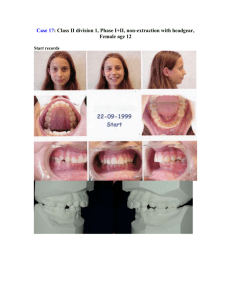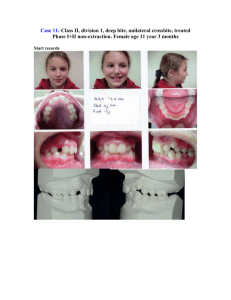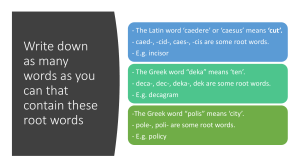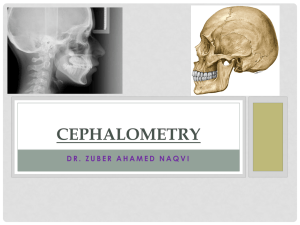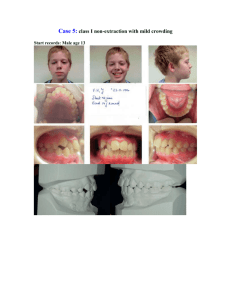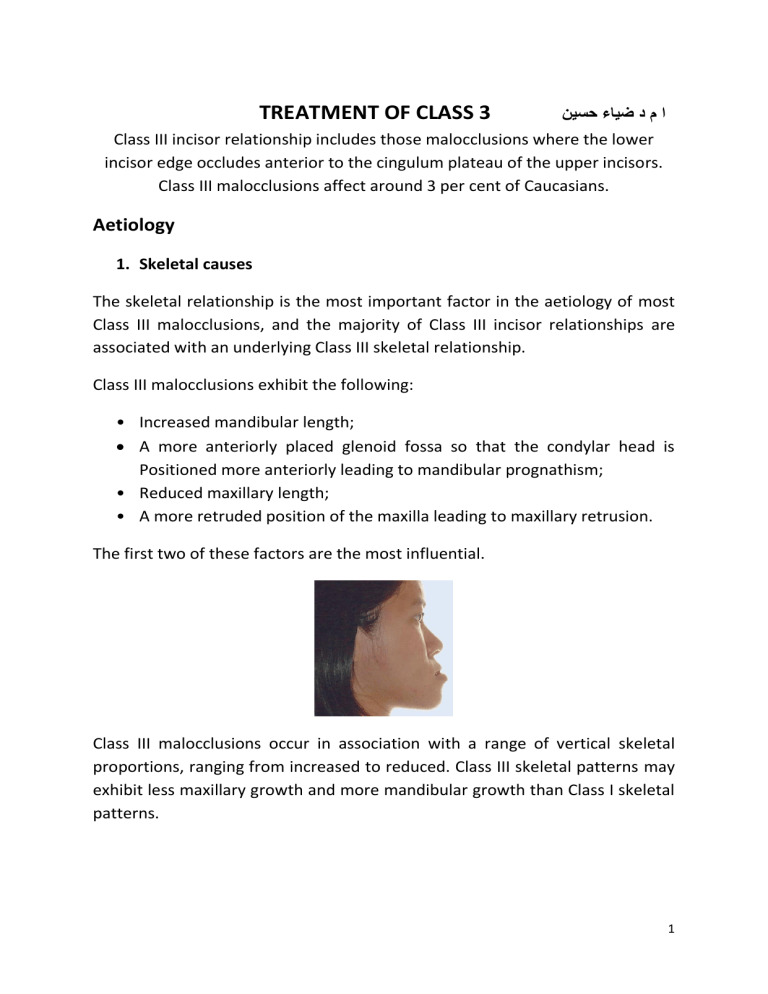
TREATMENT OF CLASS 3 ا م د ضياء حسين Class III incisor relationship includes those malocclusions where the lower incisor edge occludes anterior to the cingulum plateau of the upper incisors. Class III malocclusions affect around 3 per cent of Caucasians. Aetiology 1. Skeletal causes The skeletal relationship is the most important factor in the aetiology of most Class III malocclusions, and the majority of Class III incisor relationships are associated with an underlying Class III skeletal relationship. Class III malocclusions exhibit the following: • Increased mandibular length; A more anteriorly placed glenoid fossa so that the condylar head is Positioned more anteriorly leading to mandibular prognathism; • Reduced maxillary length; • A more retruded position of the maxilla leading to maxillary retrusion. The first two of these factors are the most influential. Class III malocclusions occur in association with a range of vertical skeletal proportions, ranging from increased to reduced. Class III skeletal patterns may exhibit less maxillary growth and more mandibular growth than Class I skeletal patterns. 1 2. Soft tissue causes In the majority of Class III malocclusions, the soft tissues do not play a major aetiological role. In fact, the reverse is often the case, with the soft tissues tending to tilt the upper and lower incisors towards each other so that the incisor relationship is often less severe than the underlying skeletal pattern due to the dento-alveolar compensation. However, in patients with increased vertical skeletal proportions where the lips are more likely to be incompetent, an anterior oral seal is often accomplished by tongue to lower lip contact. 3. Dental factors Class III malocclusions are often associated with a narrow upper arch and a broad lower arch, with the result that crowding is seen more commonly, and to a greater degree, in the upper arch than in the lower. Frequently, the lower arch is well aligned or even spaced. Occlusal features An anterior crossbite of one or more of the incisors is a common feature of Class III malocclusions. This may be associated with displacement of the mandible on closure from a premature contact into maximal interdigitation. If such a displacement is present, the prognosis for correction of the incisor relationship is more favourable. Another common feature of Class III malocclusions is buccal crossbite, which is usually due to a discrepancy in the relative width of the arches. This occurs because the lower arch is positioned relatively more anteriorly in Class III malocclusions and is often well developed, while the upper arch is narrow. This 2 is also reflected in the relative crowding within the arches with the upper arch commonly more crowded Moreover, Class III malocclusions often exhibit dentoalveolar compensation with the upper incisors proclined and the lower incisors retroclined, which reduces the severity of the incisor relationship. Treatment planning in Class III malocclusions A number of factors should be considered before planning treatment. • • • • • • • Patient’s concerns and motivation towards treatment Severity of skeletal pattern Amount and direction of any future growth Can patient achieve edge-to-edge incisor contact Overbite Amount of dento-alveolar compensation present Degree of crowding Treatment options 1. Accepting the incisor relationship In mild Class III malocclusions, particularly those cases where the overbite is minimal, it may be preferable to accept the incisor relationship and direct treatment towards achieving arch alignment. Also some patients with more severe Class III incisor relationships are unwilling to undergo comprehensive treatment involving orthognathic surgery which would be required to correct their incisor relationship. 3 2. Early orthopaedic treatment Orthopaedic correction of Class III malocclusions aims to enhance or encourage maxillary growth and/or restrain or re-direct mandibular growth. Orthopaedic correction treatment is more likely to be successful if it is carried out prior to the pubertal growth spurt. The following are some of the early orthopaedic treatment modalities: Protraction face-mask used to advance the maxilla. Co-operative patient is necessary to achieve the 14 hours per day wear required. Bone anchored maxillary protraction (known as BAMP). Screws or miniplates are used in the posterior maxilla and anterior mandible for Class III elastics. A combination of these two techniques – elastics are run between skeletal anchorage in the maxilla and a face mask. Chin-cup – this has the effect of rotating the mandible downwards and backwards with a reduction of overbite. 3. Orthodontic camouflage Correction of an anterior crossbite in a Class I or mild Class III skeletal pattern can be undertaken in the mixed dentition when the unerupted permanent canines are high above the roots of the upper lateral incisors. Extraction of the lower deciduous canines at the same time may allow the lower labial segment to move lingually slightly. Indeed, early correction of a Class III incisor relationship has the advantage that further forward mandibular growth may be counter-balanced by dento-alveolar compensation. Furthermore, orthodontic correction of a Class III incisor relationship can be achieved by 4 proclination of the upper incisors, retroclination of the lower incisors or a combination of both. Proclination of the upper incisors reduces the overbite, whereas retroclination of the lower incisors helps to increase overbite. Space for relief of crowding in the upper arch can often be gained by expansion of the arch anteriorly to correct the incisor relationship and/or buccolingually to correct buccal segment crossbites. However, expansion of the upper arch to correct a crossbite will have the effect of reducing overbite, which is a disadvantage in Class III cases. Intermaxillary Class III elastic traction from the lower labial segment to the upper molars can also be used to help move the upper arch forwards and the lower arch backwards, but care is required to avoid extrusion of the molars which will reduce overbite. Headgear to the mandibular dentition may be used in conjunction with conventional fixed appliance treatment. 4. Surgery In a proportion of cases, the severity of the skeletal pattern and/or the presence of a reduced overbite or an anterior open bite preclude orthodontics alone, and surgery is necessary to correct the underlying skeletal discrepancy. Because the actual surgery needs to be delayed until the growth rate has diminished to adult levels, planning and commencement of a combined orthodontic and orthognathic approach is best delayed until an age of 15 years in girls and 16 years in boys. This has the advantage that the patient is of an age when they can make up their own mind as to whether they wish to proceed with a combined approach. 5
